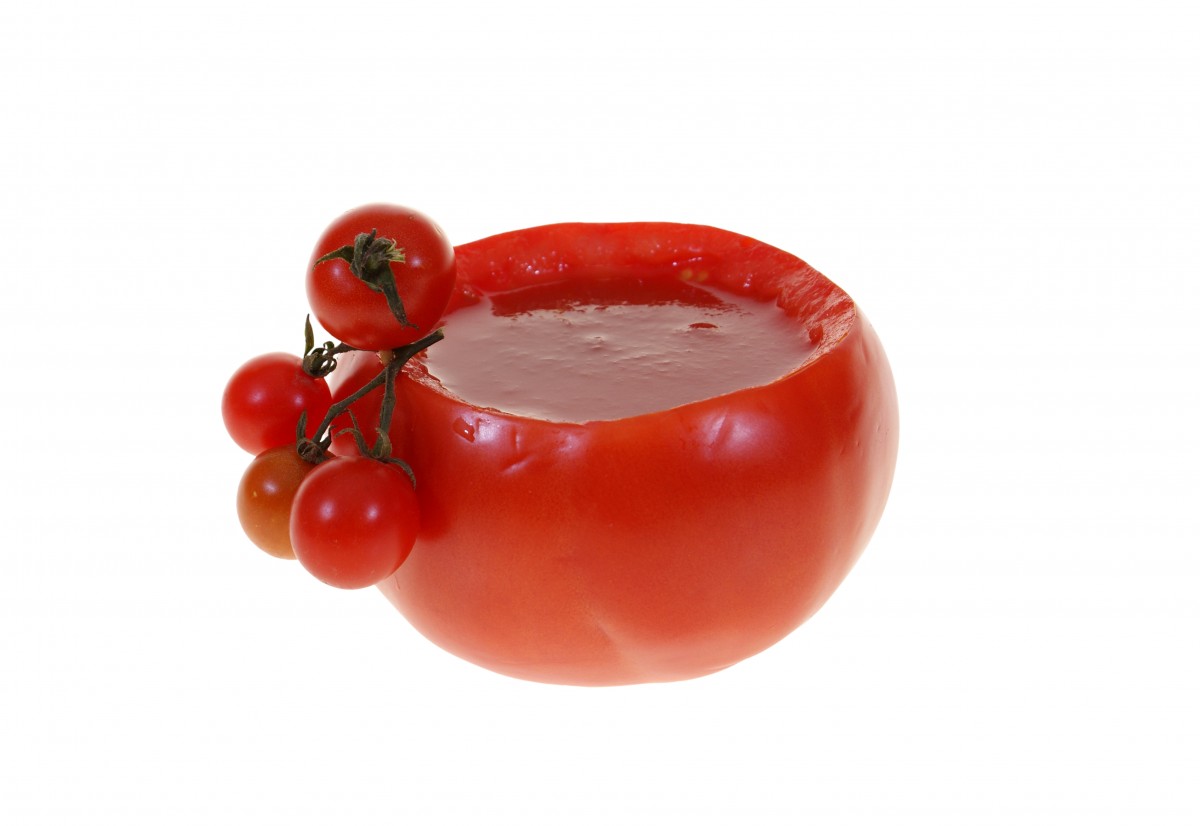
Tomato lovers rejoice! Science has discovered a new feature of the tangy, antioxidant-filled fruit (technically, berry) that makes sauces, salads, and airplane beverage service such a delight. A team of Cornell microbiologists tested tomato juice’s bacteria-killing abilities, and found it startlingly effective at taking out one of the evillest food-borne pathogens out there, Salmonella enterica Typhi. This form of Salmonella not only causes the traditional violent gastric upheaval of food poisoning, but when it escapes the digestive tract and enters the bloodstream, it causes typhoid fever. ”
Typhoid is a giant public health problem in parts of the world where sanitation and access to clean water are in flux – usually places where malnutrition is common too. So researchers looked to kill two birds with one tomato and see if the nutritional powerhouse could have an effect on food-borne illness. And (contrary to at least my original assumption) it wasn’t the acidity that did it!
“The researchers scanned the genome of tomatoes (Solanum lycopersicum) looking for genes encoding small proteins called peptides that might act as antimicrobial agents.
From four initial candidates, the team identified two antimicrobial peptides that inhibited the growth of Salmonella Typhi and even killed off a strain resistant to ciprofloxacin, the primary antibiotic used to treat typhoid fever.
Lastly, the researchers modeled the shape of their two lead candidate peptides and simulated their interactions with the bacterial cell membranes. As the modeling predicted, the two peptides ruptured Salmonella Typhi’s cell membranes in just 45 minutes.”
In addition, the peptides successfully killed off Salmonella typhimurium, a cousin of the lethal kind that just gives you regular ol’ food poisoning. While these results are from pitting peptides against microbes in a lab, and may not be as spectacular on the battlefront of a full digestive system, it’s a pretty cool indicator of how eating your vegetables (or fruits) can be good for you in unexpected ways!